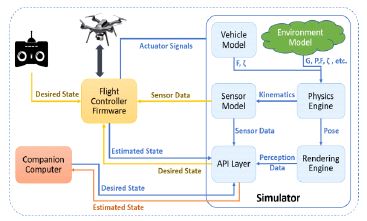Mathematical and Machine Learning Based Methods for UAV Simulation: A Systematic Literature Review
DOI:
https://doi.org/10.5281/zenodo.11084485Keywords:
Machine Learning, Drone, Simulation, UAV, Newtonian and Fluid DynamicsAbstract
Unmanned aerial vehicles (UAVs), frequently called drones, have become highly useful assets in various industries such as surveillance, transportation, and agriculture. Understanding and evaluating drone behavior is difficult because of the intricate interplay of factors such as velocity, altitude, remote controller input and flight path. Therefore, proficient, and knowledgeable workers are required for efficient drone operations. It is essential to have strong training programs for drone pilots to satisfy these expectations. The inclusion of drone simulators is a vital component of these training programs. Drone dynamics simulations are of great importance in several industries since they allow researchers to design and evaluate drones in intricate situations that would otherwise be dangerous or impractical. This paper examines different drone dynamic models based on principles of Newtonian fluid dynamics. The focus of this study is specifically on fundamental elements such as force, gravity, propeller characteristics, and air density. Moreover, this research examines the utilization of machine learning approaches for simulating drone dynamics. This study analyzes different simulation models and conducts a comparison to find areas of research that have not been addressed. After identifying these gaps, the research examines potential ways to address the drawbacks of current simulation models in the future. This research aims to offer valuable insights to future academics who are interested in constructing customized drone simulators. This work works as a core resource, directing the building of customized drone simulators for different uses.
Downloads

Downloads
Published
How to Cite
Issue
Section
License
Copyright (c) 2024 Shehan Amarasooriya, Damitha Sandaruwan

This work is licensed under a Creative Commons Attribution 4.0 International License.











